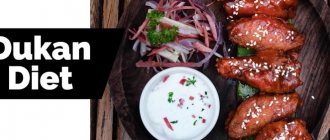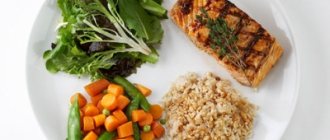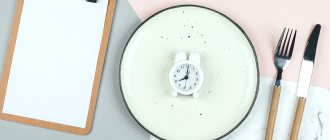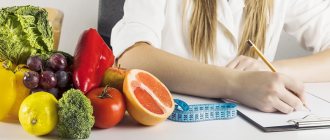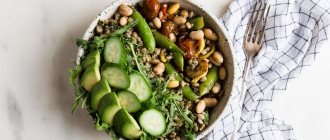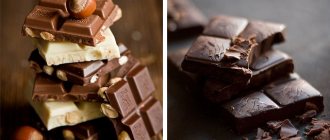How and where to start
It is clear that not a single list of the best products for proper nutrition and healthy weight loss can be called universal - each organism is special, and we all have individual preferences . Therefore, I recommend proceeding according to this scheme:
- studying theory;
- We make our own list of what to buy;
- We conduct an audit of household supplies, mercilessly throwing away everything prohibited (you can donate to charitable organizations if you don’t dare throw away the food);
- we save our grocery list (you can even print it out and hang it on the refrigerator);
- Let's go to the store and start shopping for the week.
It’s easy to create a personal list: write down from our article those products that you love, as well as those that are available in your region; cross out what you absolutely do not like or is not suitable for your health (allergies, intolerance); check to see if anything prohibited has been included.
After that, feel free to go shopping - now there will definitely be no harmful things or temptations in your refrigerator and on the shelves.
List of foods for proper nutrition
Proper, healthy food is primarily a source of energy, which is divided into 4 groups:
- complex carbohydrates;
- vegetable and animal proteins;
- fats;
- cellulose.
This also includes water, but everything is simple with it - drink only high-quality, purified water and without any additives. Let's take a closer look at the products.
Complex carbohydrates
What you probably know is that these are carbohydrates, when digested, the body receives high-quality energy (without spikes in insulin levels).
In general, carbohydrates are found in almost all foods, but the easiest way to get them is from grains (buckwheat, oatmeal, pearl barley, bulgur, brown rice, millet), legumes (peas, beans, lentils, chickpeas) and pasta made from whole grain flour or flour durum wheat varieties.
| Product | Kcal per 100 g | Product | Kcal per 100 g |
| Beans | 58 | Chickpeas | 304 |
| Hercules | 355 | Oatmeal | 345 |
| Peas | 323 | Pearl barley | 324 |
| Whole peas | 303 | Wheat “Poltavskaya” | 325 |
| Buckwheat done | 326 | Millet | 334 |
| Buckwheat core | 329 | Rice | 323 |
| Corn | 325 | Soybeans | 395 |
| Whole grain pasta | 300 | Beans | 309 |
| Pasta from TV varieties | 295 | Lentils | 310 |
| Manna | 326 | Barley | 322 |
Protein (protein)
For athletes and simply active people, protein is no less important - it helps build muscle mass and feel young and vigorous. Therefore, any list of foods - for a week, month or even a day - must necessarily include a variety of protein-rich foods .
We already know which foods contain a lot of protein. The best sources of protein are eggs, fermented milk products with a minimum amount of fat (kefir, cottage cheese, yogurt from a slow cooker with low-fat milk), lean meat (chicken, turkey, rabbit, veal), seafood and fish. By-products - liver, hearts - will also not hurt.
| Product | Kcal per 100 g | Product | Kcal per 100 g |
| Yogurt 3.2% | 87 | Chum salmon | 138 |
| Kefir 0% | 29 | Sprat | 142 |
| Kefir 1% | 37 | Smelt | 93 |
| Milk 0% | 34 | Shrimp | 85 |
| Milk 2.5% | 53 | Icy | 76 |
| Milk 3.2% | 58 | Bream | 109 |
| Raw goat milk | 71 | Salmon | 200 |
| Whole milk powder | 477 | Mackerel | 111 |
| Curdled milk 3.2% | 57 | Boiled mussels | 53 |
| Ryazhenka 2.5% | 53 | Pollock | 67 |
| Cream 10% | 121 | capelin | 159 |
| Sour cream 10% | 118 | Navaga | 78 |
| Sour cream 20% | 208 | Burbot | 85 |
| Dutch cheese | 352 | Sea bass | 123 |
| Poshekhonsky cheese | 348 | River perch | 80 |
| Russian cheese | 366 | Sturgeon | 161 |
| Sulguni cheese | 293 | Octopus | 74 |
| Low-fat cottage cheese | 89 | Halibut | 106 |
| Mutton | 201 | Roach | 108 |
| Beef | 191 | Boiled crayfish | 96 |
| Beef tongue | 160 | Carp | 119 |
| Beef heart | 89 | Saira | 257 |
| Beef brains | 126 | Salaka | 124 |
| Beef liver | 100 | Herring | 248 |
| Geese | 359 | Salmon | 222 |
| Turkey | 192 | Whitefish | 141 |
| horsemeat | 149 | Mackerel | 158 |
| Rabbit | 197 | Som | 141 |
| Chicken liver | 140 | Horse mackerel | 119 |
| Chicken gizzards | 86 | Sterlet | 126 |
| Chicken hearts | 159 | Zander | 81 |
| Chickens (white meat) | 101 | Cod | 76 |
| Chickens (on average) | 161 | Tuna | 95 |
| Pork liver | 105 | Sea eel | 331 |
| Pig heart | 87 | Oysters | 91 |
| Pig tongue | 203 | Trout | 99 |
| Pork kidneys | 84 | Hake | 84 |
| Veal | 91 | Pike | 83 |
| Gobies | 147 | Marine language | 89 |
| Pink salmon | 151 | Egg powder | 545 |
| Squid | 77 | Chicken egg | 153 |
| Flounder | 86 | Quail egg | 170 |
| crucian carp | 84 | Ostrich egg | 118 |
| Carp | 95 | Duck egg | 176 |
Fats
When deciding what to eat for weight loss, often those individuals who want to lose weight, at best, cut down on fats, and at worst, ignore them altogether. This is fundamentally wrong, and with a long-term exclusion of fats, you can not only see how the condition of your hair, nails, and skin deteriorates, but also significantly undermine your health. Especially for women - without fat, the female hormonal system cannot function normally .
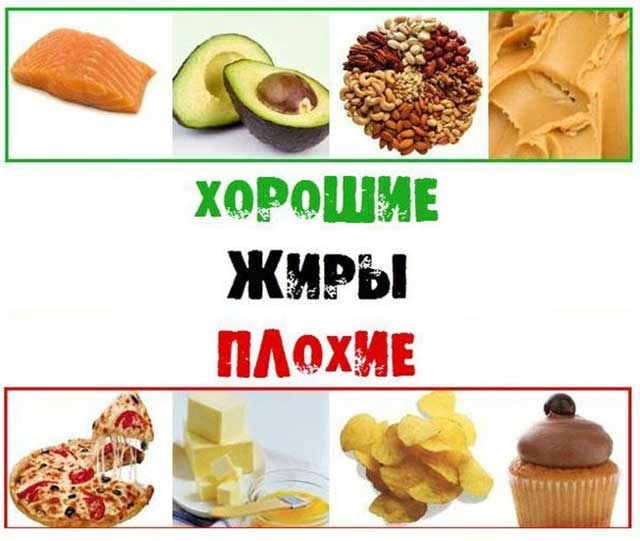
Nutritionists advise getting high-quality fats from unrefined vegetable oils, nuts and seeds, and fatty sea fish. For example, chia seeds are good - with a calorie content of 512 kcal, they contain 31 g of healthy fats!
| Product | Kcal per 100 g | Product | Kcal per 100 g |
| Peanut | 551 | Vegetable oil (any) | 898 |
| Walnuts | 700 | Butter | 750 |
| Pine nuts | 629 | Almond | 649 |
| Cashew | 633 | Sunflower seeds | 610 |
| coconut flakes | 606 | Pumpkin seeds | 580 |
| Coconut | 380 | Pistachios | 610 |
| Poppy | 478 | Hazelnut | 707 |
Cellulose
The role of fiber is important both in a healthy lifestyle and when losing weight - it promotes long-term satiety, improves the functioning of the gastrointestinal tract and does a lot more so that we can enjoy life to the fullest.
The best sources of fiber are fresh vegetables, fruits and berries, herbs, dried fruits.
Remember! Your daily list of foods for proper nutrition must include all groups!
Vegetables and herbs, fruits, berries and dried fruits
| Product | Kcal/100g | Product | Kcal/100g |
| Eggplant | 24 | Apricot | 40 |
| Zucchini | 23 | Avocado | 208 |
| White cabbage | 27 | Agrus (gooseberry) | 42 |
| Brussels sprouts | 43 | Watermelon | 28 |
| Red cabbage | 24 | Quince | 40 |
| Cauliflower | 30 | A pineapple | 49 |
| Potato | 80 | Orange | 38 |
| Young potatoes | 61 | Banana | 91 |
| Sweet potatoes (yam) | 61 | Grape | 64 |
| Green onion | 19 | Pomegranate | 52 |
| Leek | 33 | Grapefruit | 35 |
| Bulb onions | 41 | Pear | 42 |
| Carrot | 34 | Melon | 39 |
| cucumbers | 14 | Strawberries | 40 |
| Patissons | 19 | Raisin | 271 |
| Sweet pepper | 26 | Figs | 257 |
| Parsley | 49 | Strawberry | 28 |
| Parsley (root) | 53 | Cranberry | 21 |
| Rhubarb (stalks) | 16 | Kiwi | 49 |
| Radish | 21 | Dried apricots | 240 |
| Radish | 35 | Lemon | 16 |
| Turnip | 27 | Mango | 67 |
| Salad | 17 | Raspberries | 39 |
| Beet | 42 | Mandarin | 38 |
| Celery | Papaya | 48 | |
| Celery (root) | 32 | Peach | 42 |
| Asparagus | 21 | Plum | 43 |
| Tomatoes | 23 | Date fruit | 306 |
| Dill | 31 | Persimmon | 55 |
| Horseradish | 44 | Blueberry | 38 |
| Cheremsha | 36 | Prunes | 242 |
| Garlic | 46 | Mulberry | 53 |
| Spinach | 22 | Apple | 44 |
How to accustom yourself to proper nutrition?
To accustom yourself to a balanced diet, you need to plan your menu in advance, buy and prepare food. To make dishes varied and tempting, nutritionists recommend experimenting with spices and combining different foods. You should leave 1-2 favorite treats in your diet. The “correct” sweets allowed in small quantities are dark chocolate, apple marshmallows, natural jellies, marmalades and ice cream, dried fruits.
To cope with hunger during the day, you are allowed to eat unlimited amounts of negative-calorie vegetables and fruits. These foods are rich in plant dietary fiber, so when digesting them, the body spends more energy than it receives. These include:

- celery;
- rhubarb;
- cabbage;
- cucumbers;
- asparagus;
- radish;
- green apples;
- pineapples;
- all types of greens and leafy salads.
You are allowed to drink kefir before going to bed.
A balanced diet is the basis for a high quality of life, health and active longevity.
Top 10 products for weight loss
From all this variety, I would like to highlight 10 products that are simply ideal for both weight loss and weight loss:
- ginger is both tasty and healthy, and also has a slight fat-burning effect;
- grapefruit - vitamins, cholesterol protection, minimum calories;
- oatmeal satiates for a long time and easily replenishes the lack of carbohydrates. A serving of cooked oatmeal does not contain many calories;
- buckwheat - similar in properties to oatmeal;
- apples, raspberries, blueberries - tasty, low-calorie and very rich in vitamins;
- low-fat cottage cheese is an ideal source of protein and many useful micro- and macroelements;
- lean sea fish;
- chicken fillet;
- cabbage, including sea cabbage, contains so few calories and so many useful substances that everyone should include it in their list of foods for weight loss or simply maintaining weight.
- dill, parsley, lettuce and any other greens are useful both as a source of vitamins, fiber, and as simply a great way to make any food tastier.
We could also include green tea in the top 10 - its qualities are very useful for those losing weight, but only without honey, sugar or other sweeteners.
Low-carbohydrate diet menu for weight loss for a week
- You can eat lamb, pork, chicken, veal, rabbit - all this, of course, within acceptable limits.
- The second mandatory product of the diet is egg whites. You can make a light salad with them, cook an omelet, or simply eat them boiled.
- Another important menu ingredient is fermented milk products. Snacks made from yogurt, kefir, and fermented baked milk will help cope with hunger between morning, lunch and evening meals.
We present to your attention a carbohydrate-free menu for seven days. Based on it, you can easily create your monthly nutrition program. Just swap the days or supplement it with products from the allowed list.
Try to drink a lot of water and consume as little salt as possible.
The menu for every day on a low-carbohydrate diet for weight loss may look like this:
| Day of the week | Daily diet |
| Monday | Morning: a glass of one percent kefir, 200 g of brown rice and a glass of unsweetened tea. Snack: a portion of boiled beets with olive oil, a couple of walnuts. Day: boiled chicken with a salad of cucumber, cabbage, onion and pepper. Snack: three boiled egg whites with a piece of hard cheese. Evening: boiled fish, one hundred grams of cottage cheese, unsweetened green tea or an apple. |
| Tuesday | Morning: a glass of plain yogurt, 4 walnuts. Snack: green apple. Day: soup with chicken and vegetables, 200 gram piece of boiled veal. Snack: a glass of one percent kefir, 2 pieces of cheese. Evening: boiled whites of 3 eggs with seafood salad. |
| Wednesday | Morning: 150-200 g boiled oatmeal Snack: grapefruit or pomelo. Day: turkey and green bean soup, a glass of low-fat kefir, 200 g of boiled turkey. Snack: Cabbage and cucumber salad with olive oil. Evening: 200 g boiled pork, 2 cucumbers and a tomato. |
| Thursday | Morning: omelette of three egg whites and 1 yolk, 2 slices of ham, unsweetened green or herbal tea. Snack: a glass of unsweetened yogurt and an apple. Day: 200 g of boiled fish and a side dish of stewed vegetables. Snack: low-fat cottage cheese 100 g. Evening: 200 g of boiled meat and the same amount of fresh vegetable salad. |
| Friday | Morning: a glass of kefir with bran, a handful of any nuts. Snack: 2 apples or peaches. Day: lamb broth, boiled lamb, vinaigrette. Snack: any vegetable salad and a couple of egg whites. Evening: 200 g of boiled fish, 100 g of cottage cheese, low-fat kefir. |
| Saturday | Morning: buckwheat porridge + a couple of prunes, a mug of coffee without sweeteners. Snack: 100 g cottage cheese with bran. Day: borscht without potatoes, 200 g of boiled meat. Snack: fresh cabbage and cucumber salad with olive oil. Evening: vegetable salad with seafood, 2 pieces of hard cheese, a glass of one percent kefir. |
| Sunday | Morning: an omelette of three proteins, a couple of pieces of boiled fish, a slice of whole grain bread and unsweetened green tea. Snack: one percent kefir. Day: 200 g beef and 100 g brown rice. Snack: low-fat cottage cheese or fresh vegetable salad. Evening: boiled chicken 200 g and buckwheat 100 g. |
Save the table of the sample menu by downloading it here so that it is always at hand.
Prohibited products
Since we're talking about sugar, it's time to move on to products that are prohibited in paragraphs.
I think each of us already knows which foods to exclude:
- everything that contains sugar. Sweets, chocolates, store-bought yoghurts with fillings, and even that delicious and healthy raspberry jam from grandma;
- flour products made from premium flour, various snacks (chips, crackers, etc.);
- everything fried in fat, smoked and salted;
- any alcohol, including beer. Even those brewed in private breweries are “natural and healthy”;
- any semi-finished products: dumplings, dumplings;
- all kinds of store-bought juices, jams and generally any preserves with vinegar, salt, sugar.
With a list to the store
If your personal list is ready, let's go shopping!
Before doing this, I advise you to have a snack - with an empty belly, you can rush and put what you don’t need in the basket.
also better to take a specific route, trying not to go near departments with sweets , cakes, ice cream and cookies.
It is also better not to visit departments with prepared food, especially at the beginning of your journey, while you are still learning to plan your diet.
Let's read the composition! This is very important - often a product that is healthy and correct at first glance may contain various taboo additives.
What does healthy food consist of?
A healthy diet should not include food that contains pesticides. Products with a balanced diet should contain 4 main components that allow you to get rid of excess weight and normalize the functioning of internal organs and the digestive tract. These include:
- BJU (proteins, fats, carbohydrates). They are considered the main sources of energy and building material for cells.
- Fiber. Coarse fiber that normalizes the digestion process.
- Mineral components. Due to them, water metabolism and electrostatic tension in internal organs are normalized; they participate in most enzymatic processes and in the construction of tissues.
- Vitamins. They strengthen the immune system and are responsible for a person’s appearance; they will also help normalize metabolic processes in the body.
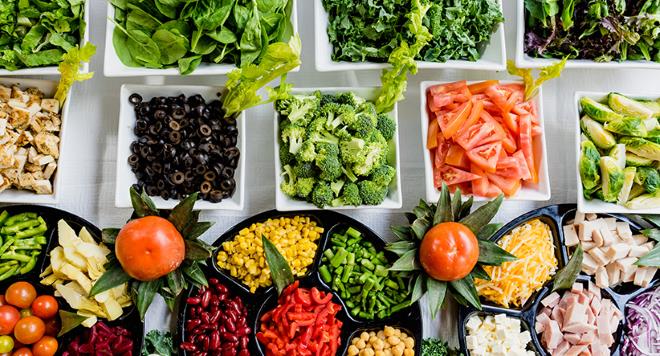
Descriptions of food products, their names and detailed composition will help you decide on the choice of diets for weight loss.
Before you start eating healthy, you need to decide which foods are environmentally friendly and which are not.
Tips video
I also recommend this must-watch video with advice from doctors:
Irina Polyanitsa My name is Irina, I am the owner and admin of the site, as well as the author of most of the recipes and articles. I love to cook simple and healthy delicacies. Certified gym instructor, personal trainer. She completed a course on nutrition and health at Stanford University, Stanford Introduction to Food and Health, as well as a course at Ludwig Maximilian University of Munich (LMU) Nutrition and Lifestyle in Pregnancy (about nutrition and lifestyle during pregnancy).
